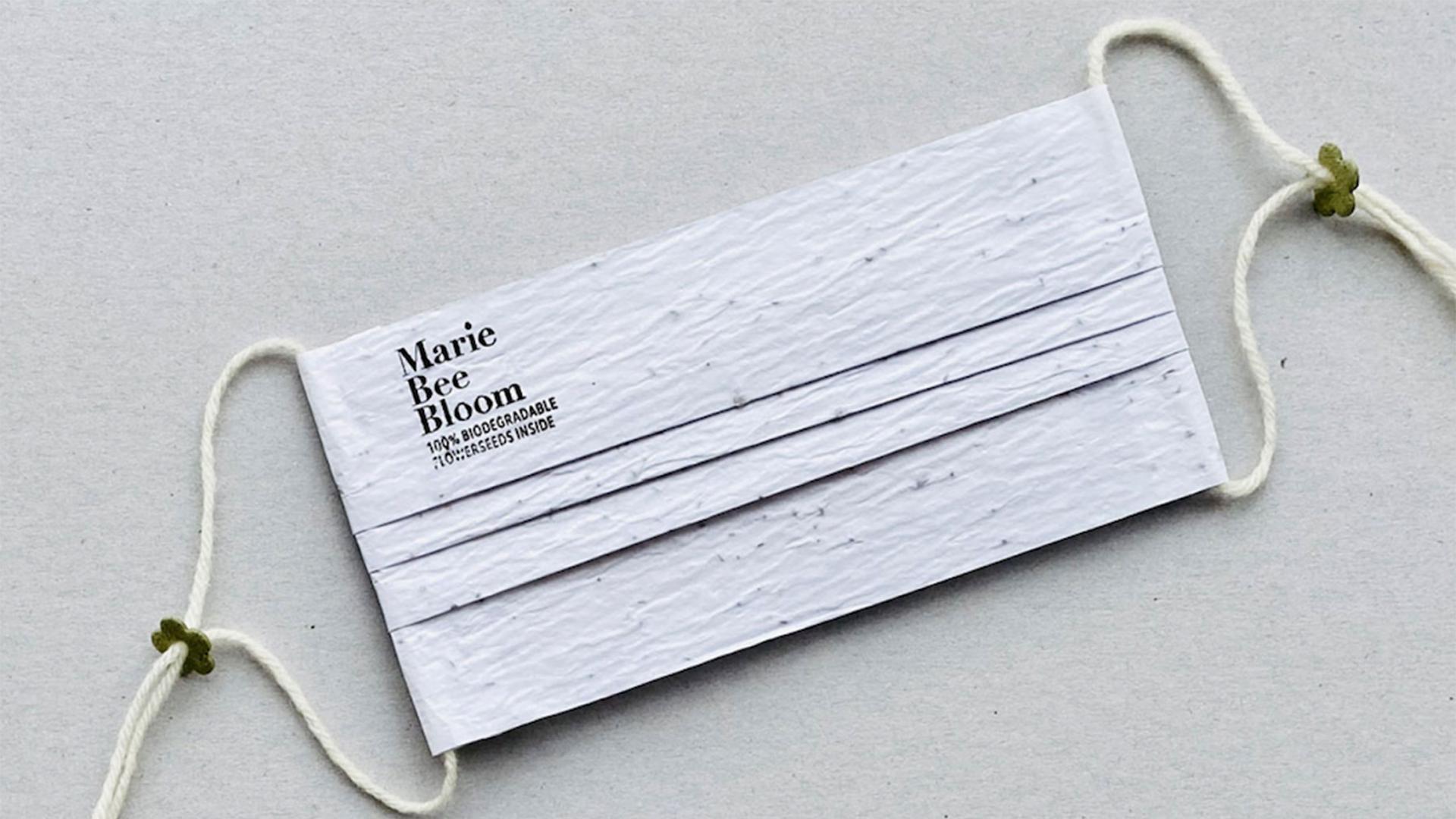People across the globe have become accustomed to putting on a mask every day, and then taking them off. But now we see them everywhere — on the ground, on sidewalks and in parks — when they belong in the trash can.
Most COVID-19 masks are supposed to be disposable and for one-time use. But most are contributing to plastic pollution.
Related: In Zimbabwe, vaccine hesitancy among front-line workers stalls rollout
And since they’re made partly from plastic, they’re not expected to break down or disintegrate quickly.
To counter this problem, Dutch graphic artist Marianne de Groot-Pons came up with a biodegradable alternative — a mask made of rice paper, with a hidden extra inside: flower seeds.
People online are sharing in the delight of these masks that bloom when planted:
De Groot-Pons talked with The World’s host Marco Werman about her inspiration behind the design.
Marco Werman: Marianne, what are the flower seeds in the mask about? Let’s start there. And what kind of flowers are they?
Marianne de Groot-Pons: Yeah, I was stumbling for weeks over all these blue masks and I thought, OK, this is not good. And will this work out when I put some seeds in them and make the fabric biodegradable? So after use, you can plant them. And my goal is to bloom the world.
So, the seeds are in the mask. You bury the whole mask, right?
You bury the whole mask. Yes. Also, the straps and the rosettes, everything you can plant in your garden or flower pot.
And what kind of flowers are in the masks?
It’s a kind of meadow mix. Austral cornflower, gilia, dill.
And the mask straps, as well? They are also biodegradable?
Yes, they’re pure wool. So, they’re 100% degradable, and they are just only washed in a river. So, they are not with chemicals at all. So, they’re just pure wool.
So, how effective is it at preventing the transmission of COVID[-19]? I mean, is it at the standard of the KN95 masks?
No, no, no. You can compare them with the homemade fabric masks. So, they have not been tested. Yeah, you compare them with the homemade masks.
How did you come up with this idea for a rice paper mask?
I’m a graphic designer, so I’m a creative person and all the pollution makes me really sad. So I thought, we have to wear all these masks. So, is it possible to do something creative with these masks so that they’re not bad for [the] Earth? And that was the start of these masks.
So, I was reading one of the reasons you created this biodegradable mask, that you were kind of atoning for your 10-year stint with Unilever, the British consumer goods company. What did you do for Unilever?
I worked for a graphic designer for 20 years, so for several brands, not only Unilever. Also other brands. And, I made some packaging made from plastic, so it could be possible that there is one bottle in the ocean with my design on it. And that thought made me think, OK, now that’s not good. So, stop with all these plastics and do something good with my job as a graphic designer.
How many masks are you selling each month at this point?
We just started in February. We’re working [at] the kitchen table. That’s where this whole project started. So, we were really proud that we could produce 100 masks each night. But now, we are connected with a real producer. So, we have 30 people working on this project.
And how many have you sold in the last two months?
In the last two months, we sold 50,000 masks.
Wow. That’s impressive.
Incredible. Yeah. I’ve never dreamed that it [would] work out this way. I thought, OK, it’s only for friends and family. But, now everybody all around the world is calling me and asked me, “Oh, could you please send them?”
How much do you charge for these masks, these rice paper masks?
They’re in a box with five, and they are 15 euros.
So, about $20 for five masks. And if I wanted to order one, could I do that?
Not yet. Not yet. We would love to bloom [the] US, too. And so, the US people need to be patient, but we’re working on it.
This interview has been lightly edited and condensed for clarity.
